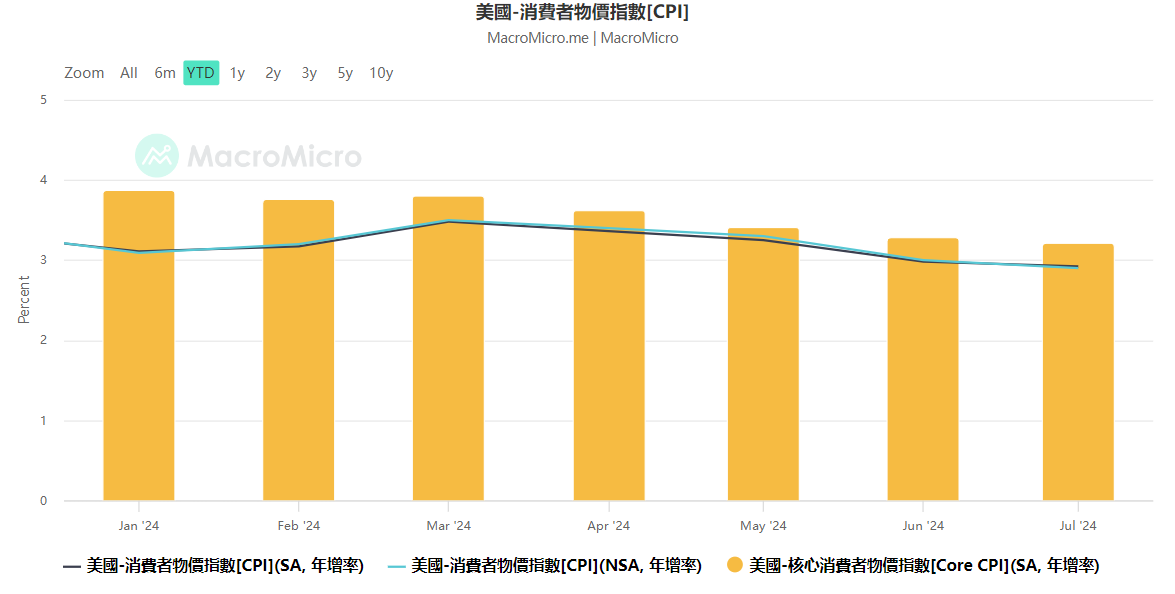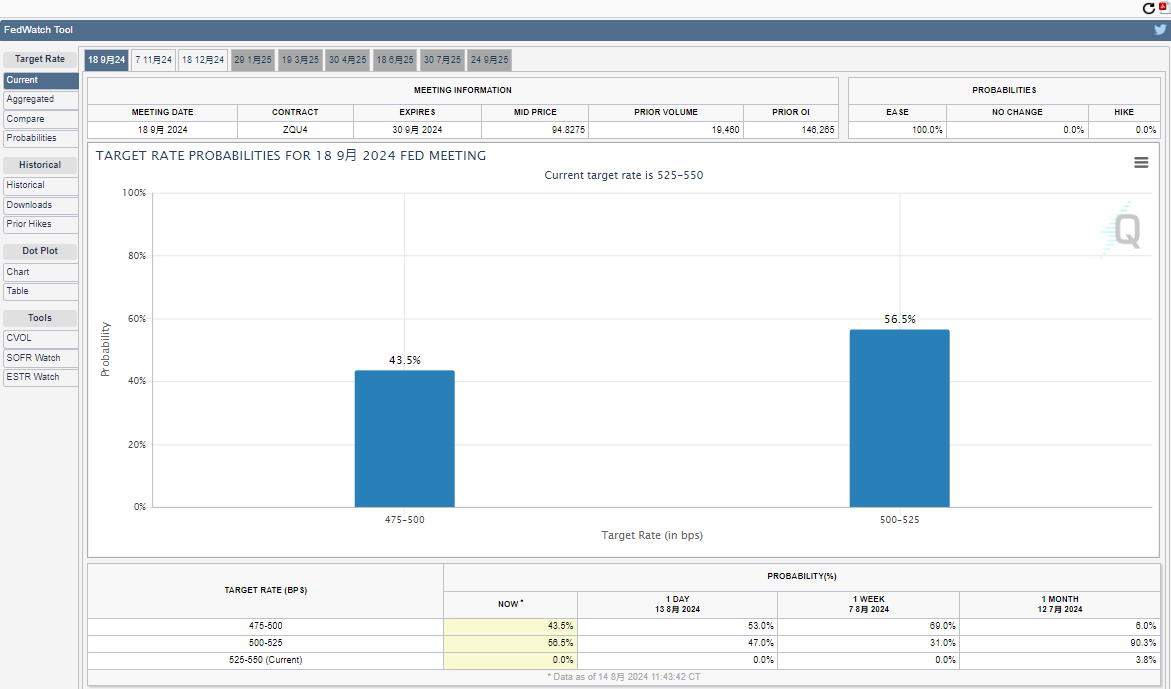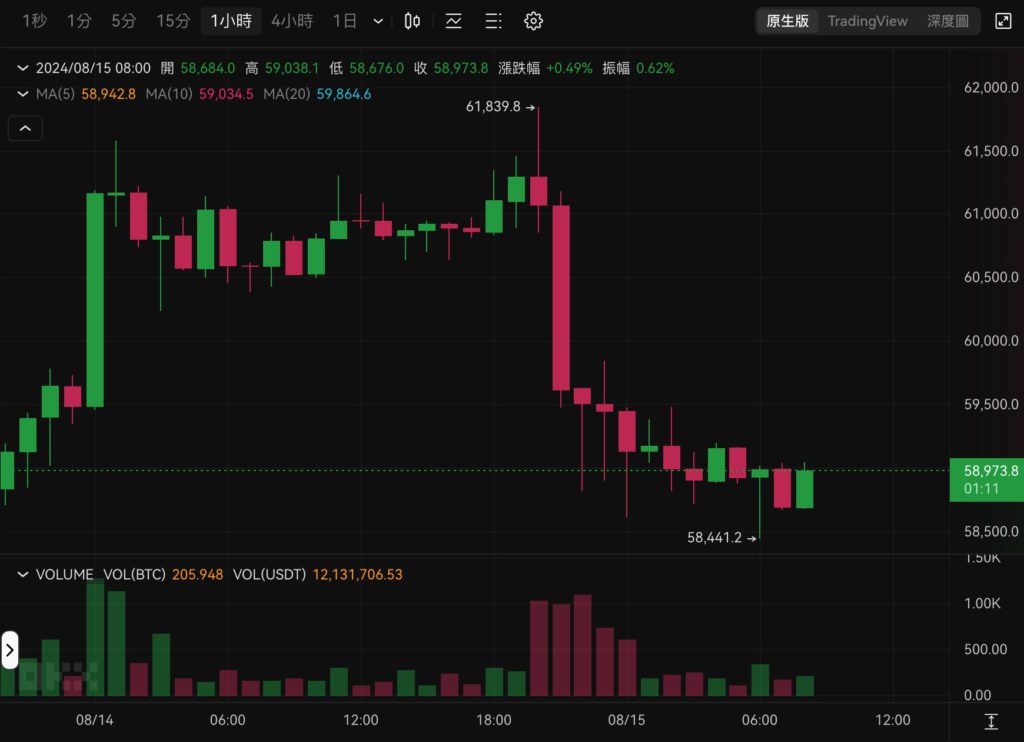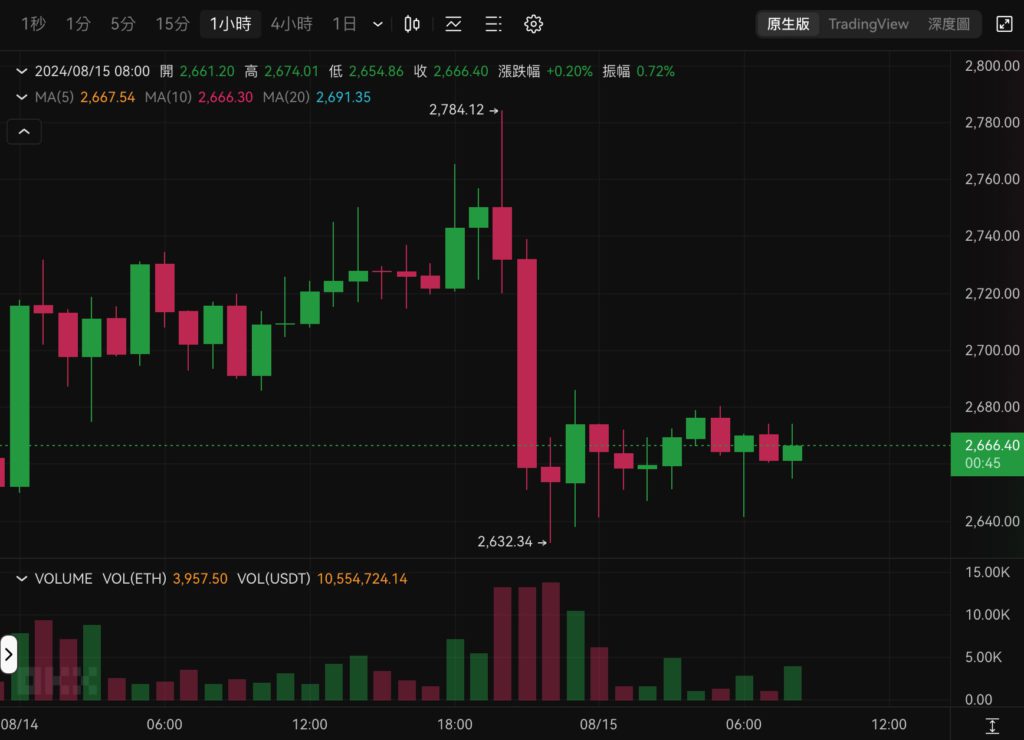The U.S. Department of Labor released the consumer price index (CPI) that attracted much market attention last night (14th). The report showed that the U.S. CPI increased by 0.2% in July, higher than the 0.1% decrease in June, but in line with market expectations. The annual CPI growth rate dropped to 2.9% in July, lower than the 3% growth expected in June. This was the fourth consecutive month of cooling and the lowest since March 2021.
In addition, excluding volatile food and energy prices, core CPI increased by 0.2% in July, slightly higher than the 0.1% in June, but still in line with market expectations. The annual core CPI growth rate fell to 3.2% in July, hitting a more than three-year low, indicating that U.S. inflation continues to be under control.

Fed mouthpiece: July CPI clears the way for rate cut
After the CPI data was released, Wall Street reporter Nick Timiraos, known as the "Federal Reserve's mouthpiece," wrote that July's CPI data cleared the way for the Federal Reserve to start cutting interest rates at its next meeting:
July's CPI continued the trend of sharp decline in inflation, making it almost certain that the Fed will start cutting interest rates in September.
However, as to how much the Fed will cut interest rates in September, Nick believes that it has not yet been determined:
The report did not resolve the debate over whether to cut interest rates by 25 basis points or 50 basis points. Instead, the final outcome may also depend on labor market reports, including jobless claims and non-farm payrolls reports.
According to the CME Group's Fed Watch tool, the market currently believes that the probability of the Fed cutting interest rates by one percentage point in September is 56.5%, and the probability of cutting interest rates by two percentage points is 43.5%.

Three major U.S. stock indexes rose, but fees fell
The latest CPI data in the United States showed that inflation has slowed down again, spurring short-term gains on the four major U.S. stock indexes, but they all pulled back at the close:
- The Dow Jones Industrial Average rose 242.75 points, or 0.61%, to close at 40008.39 points
- The S&P 500 index rose 20.78 points or 0.38% to close at 5455.21 points
- The Nasdaq Composite Index rose 4.99 points or 0.03% to close at 17192.60 points
- The Philadelphia Semiconductor Index fell 8.96 points or 0.18% to close at 4933.34 points.
Bitcoin briefly surged higher before falling
In terms of cryptocurrency, Bitcoin originally hit US$61,839 after the CPI data was released, but then selling pressure emerged and Bitcoin quickly fell below US$60,000, reaching a low of US$58,441 around 6 o'clock this morning. At the time of writing, it rebounded slightly to US$58,973, down 3.03% in the past 24 hours.

Ethereum had a similar trend, reaching a maximum of $2,784 and then quickly falling below $2,700. At the time of writing, it was trading at $2,666, down 1.71% in the past 24 hours.

Why is the crypto market falling instead of rising?
As for why Bitcoin and Ethereum failed to gain incentives, one possible reason is due to the psychology of anticipation. The market has already reacted in advance to the upcoming interest rate cut in September, and large investors may also take the opportunity to rush higher and fall back to harvest retail investors.
Another possible reason is that according to Arkham's post on X about nine hours ago, an address associated with the "US government" transferred 10,000 BTC to the Coinbase Prime wallet late last night, seemingly in preparation for sale.
It is understood that the wallet received 10,000 BTC from the US government two weeks ago, which were funds seized during the Silk Road law enforcement operation.





